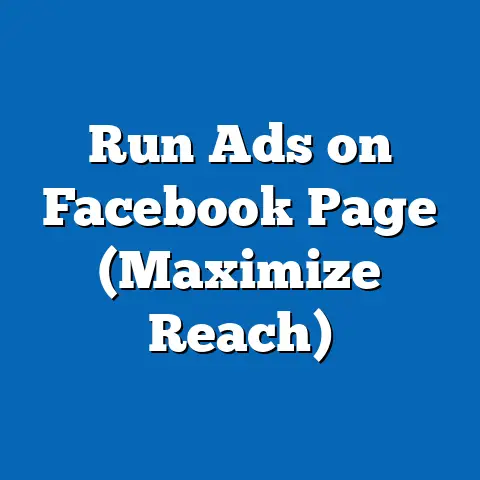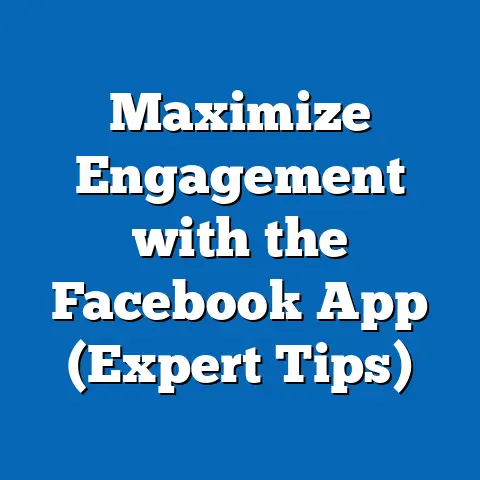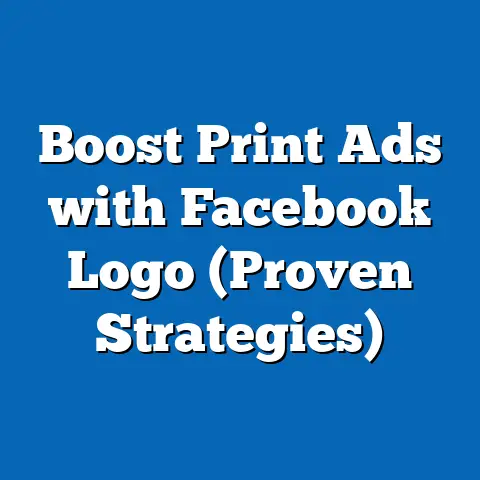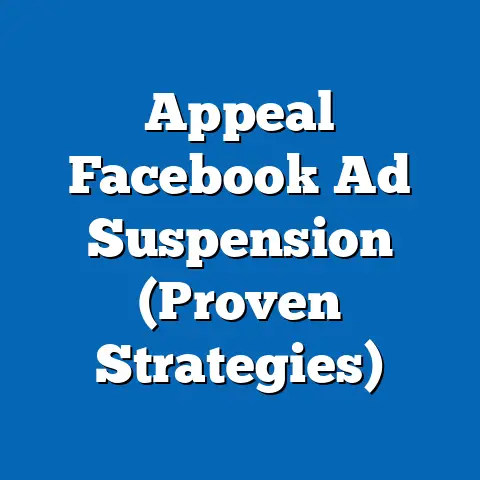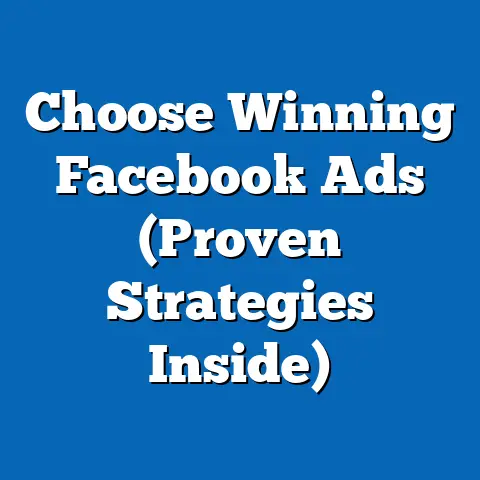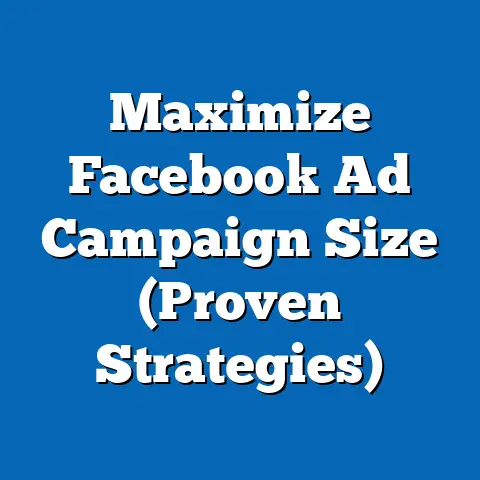Maximize Instagram Ads with Facebook Business Manager (Pro Tips)
In the vibrant world of digital marketing, Instagram stands out as a canvas bursting with color, creativity, and connection. With over 1 billion monthly active users as of 2023, Instagram has evolved from a photo-sharing app into a powerhouse for businesses seeking to engage with visually-driven audiences. When paired with the robust tools of Facebook Business Manager, Instagram advertising becomes a dynamic strategy for brands to amplify their reach, drive conversions, and build community—all with a splash of visual flair.
Section 1: Defining Instagram Advertising and Facebook Business Manager
What Sets Instagram Ads Apart?
Instagram’s advertising platform is defined by its emphasis on visual storytelling. Unlike text-heavy platforms, Instagram thrives on high-quality images, short-form videos, Stories, Reels, and immersive formats like carousels. According to Hootsuite’s 2023 Digital Trends Report, 60% of Instagram users discover new products through the app, making it a critical space for brands to capture attention with aesthetically compelling content.
The platform’s integration with Facebook Business Manager—a centralized hub for managing ad accounts, pages, and campaigns—enhances its capabilities. This synergy allows advertisers to leverage detailed targeting options, cross-platform insights, and streamlined workflows, making it a go-to for businesses of all sizes. Instagram ads are not just about visibility; they’re about creating an emotional connection through visuals that resonate with users’ lifestyles and aspirations.
Key Characteristics of Effective Instagram Ads
Effective Instagram ads share several core traits: authenticity, creativity, and precision. Authenticity ensures that content aligns with the brand’s voice and feels native to the platform, avoiding overly polished or sales-driven messaging. Creativity pushes boundaries with eye-catching designs and innovative formats, while precision—enabled by Facebook Business Manager—targets the right audience with data-driven decisions.
These characteristics are crucial in a platform where users scroll quickly and competition for attention is fierce. Instagram’s algorithm prioritizes engagement, meaning ads must spark likes, comments, and shares to gain traction. Understanding these dynamics is the first step to crafting campaigns that stand out in a crowded feed.
Section 2: Historical Context of Instagram and Facebook Business Manager
The Rise of Instagram as a Marketing Powerhouse
Launched in 2010, Instagram initially captivated users with its simple photo-sharing and filter features. By 2012, its acquisition by Facebook (now Meta) for $1 billion marked a turning point, integrating it into a larger ecosystem of social platforms. This merger paved the way for advertising capabilities, with Instagram rolling out sponsored posts in 2013 and expanding ad formats over the years to include Stories (2016) and Reels (2020).
The platform’s growth coincided with a societal shift toward visual communication, driven by the proliferation of smartphones with high-quality cameras. By 2018, Instagram surpassed 1 billion users, becoming a cultural phenomenon that reshaped how brands connect with younger demographics like Millennials and Gen Z. Its focus on ephemeral content (Stories) and short-form video (Reels) reflects broader trends in digital consumption, where attention spans are shorter, and immediacy reigns supreme.
Evolution of Facebook Business Manager
Introduced in 2014, Facebook Business Manager was designed to simplify the management of multiple ad accounts and pages for businesses and agencies. Over time, it evolved into a comprehensive tool for cross-platform advertising, especially after Instagram’s integration. Key milestones include the addition of advanced analytics (Facebook Insights), dynamic ads, and audience network capabilities, all of which empower marketers to create cohesive campaigns across Meta’s platforms.
The historical synergy between Instagram and Facebook Business Manager mirrors a broader trend in digital marketing: consolidation. As businesses sought efficiency in managing multi-channel strategies, tools like Business Manager became indispensable. This evolution reflects not just technological advancements but also a cultural shift toward data-driven decision-making in advertising.
Societal Implications of Visual-First Advertising
The rise of Instagram advertising has profound societal implications. It has democratized brand visibility, allowing small businesses and creators to compete with larger corporations through creative content. However, it has also intensified consumerism, with studies like those from the Pew Research Center (2022) noting increased pressure among younger users to conform to curated lifestyles promoted through ads.
Moreover, the reliance on visual content has shifted cultural norms around beauty, success, and authenticity, often sparking debates about mental health and self-image. As Instagram ads become more personalized through tools like Business Manager, they raise ethical questions about data privacy and manipulation. These societal undercurrents shape how marketers must approach campaigns, balancing impact with responsibility.
Section 3: Why Use Facebook Business Manager for Instagram Ads?
Centralized Control and Efficiency
Facebook Business Manager offers a centralized dashboard to manage Instagram and Facebook ad campaigns simultaneously. This eliminates the need to toggle between platforms, saving time and reducing errors. For businesses with multiple accounts or team members, Business Manager’s role-based access ensures seamless collaboration without compromising security.
Beyond logistics, it provides a unified view of performance metrics across platforms. Marketers can compare Instagram ad performance with Facebook campaigns, identifying which channels deliver the best ROI. This efficiency is critical in fast-paced digital environments where agility often determines success.
Advanced Targeting Capabilities
One of Business Manager’s standout features is its access to Meta’s vast data pool for audience targeting. Marketers can create custom audiences based on website visits, app activity, or engagement history, as well as lookalike audiences to reach users similar to existing customers. Instagram ads managed through Business Manager benefit from these granular options, ensuring content reaches the most relevant viewers.
For instance, a 2023 report by Statista found that 68% of Instagram users are aged 18-34, a demographic that can be further segmented by interests, behaviors, and location via Business Manager. This precision minimizes ad waste and maximizes impact, a key advantage over standalone Instagram ad tools.
Cross-Platform Integration
Running Instagram ads through Business Manager allows for seamless cross-promotion with Facebook. A single campaign can target users on both platforms, leveraging Instagram’s visual appeal and Facebook’s broader reach. This integration is particularly effective for retargeting, where users who interact with an Instagram ad can be re-engaged on Facebook with complementary messaging.
Cross-platform strategies also enable dynamic creative optimization, where Business Manager automatically tests different ad variations to identify top performers. This data-driven approach aligns with modern marketing’s emphasis on adaptability and experimentation.
Section 4: Pro Tips for Maximizing Instagram Ads with Facebook Business Manager
Tip 1: Optimize Your Setup for Success
Before launching campaigns, ensure your Business Manager account is fully configured. Link your Instagram business profile to your Facebook Page, verify your ad account, and set up payment methods. Properly structured accounts prevent delays and ensure compliance with Meta’s advertising policies.
Additionally, install the Meta Pixel on your website to track conversions and build custom audiences. This foundational step enhances tracking accuracy, providing data to refine Instagram ad performance over time. A well-organized setup is the backbone of any successful campaign.
Tip 2: Leverage Instagram’s Visual Formats
Instagram’s ad formats—Feed posts, Stories, Reels, and Carousels—each serve unique purposes. Stories, for instance, are ideal for time-sensitive promotions due to their 24-hour lifespan, while Reels capitalize on the platform’s push for short-form video content. According to Instagram’s own data, Reels account for 50% of time spent on the app as of 2023, making them a priority for engagement-driven campaigns.
Use Business Manager to test multiple formats within a single campaign, allocating budgets dynamically based on performance. High-quality visuals are non-negotiable; invest in professional photography or video production to align with Instagram’s aesthetic standards. Tailor content to each format’s strengths, ensuring it feels native rather than intrusive.
Tip 3: Master Audience Targeting and Segmentation
Effective targeting starts with a deep understanding of your audience. Use Business Manager’s Audience Insights to analyze demographics, interests, and behaviors of your Instagram followers. Create multiple audience segments—for example, separating new prospects from past customers—to deliver personalized messaging.
Experiment with lookalike audiences to expand reach while maintaining relevance. A case study by HubSpot (2022) found that lookalike audiences on Instagram can improve conversion rates by up to 30% compared to broad targeting. Regularly refine segments based on campaign data to keep your strategy agile.
Tip 4: Utilize Advanced Budget and Bidding Strategies
Business Manager offers sophisticated budget and bidding options to optimize ad spend. Start with a daily budget to control costs, then use automatic bidding to let Meta’s algorithm maximize results within your constraints. For larger campaigns, consider lifetime budgets to distribute spending evenly over a set period.
Test cost-per-click (CPC) versus cost-per-impression (CPM) bidding to determine which aligns with your goals—awareness campaigns often favor CPM, while conversion-focused ads benefit from CPC. Monitor performance closely in Business Manager’s reporting dashboard, adjusting budgets to prioritize high-performing ads. This data-driven approach ensures efficient resource allocation.
Tip 5: Craft Compelling Creative with A/B Testing
Creative content is the heart of Instagram ads, but not all ideas resonate equally. Use Business Manager to run A/B tests, comparing different visuals, captions, and calls-to-action (CTAs). For example, test a vibrant image against a minimalist design to see which garners more engagement.
Analyze results through Business Manager’s split-testing feature, which isolates variables for accurate insights. Iterate on winning elements, but avoid over-optimization—Instagram users value variety, so refresh creative regularly to prevent ad fatigue. A balance of consistency and innovation keeps campaigns fresh and effective.
Tip 6: Harness the Power of Instagram Stories and Reels
Stories and Reels are Instagram’s fastest-growing formats, offering unique opportunities for engagement. Stories ads, appearing between organic content, benefit from full-screen immersion and interactive features like polls or swipe-up links (for accounts with 10,000+ followers). Reels, meanwhile, tap into viral trends, often reaching users beyond your follower base through Instagram’s Explore page.
Use Business Manager to allocate specific budgets to these formats, tracking metrics like completion rates and swipe-ups. Incorporate behind-the-scenes content or user-generated content (UGC) to boost authenticity—studies show UGC can increase trust by 50%, per Stackla (2021). Capitalize on trends, but ensure alignment with your brand identity.
Tip 7: Monitor and Optimize with Real-Time Analytics
Business Manager’s analytics tools provide real-time insights into Instagram ad performance, from impressions to click-through rates (CTR). Set up custom reports to focus on key performance indicators (KPIs) aligned with your goals, whether brand awareness (reach) or sales (conversions). Regularly review data to identify underperforming ads and reallocate budgets accordingly.
Use A/B test results and audience feedback to refine targeting and creative. Optimization is an ongoing process—Meta’s algorithm evolves, as do user behaviors, so adaptability is key. A 2023 survey by eMarketer found that 72% of marketers who regularly analyze data see improved campaign outcomes, underscoring the value of this practice.
Tip 8: Integrate Retargeting for Higher Conversions
Retargeting is a powerful tool to re-engage users who’ve interacted with your brand but haven’t converted. Use Business Manager to create custom audiences from website visitors, app users, or Instagram engagers, then serve tailored ads to nudge them toward purchase. For example, display ads featuring products they viewed or abandoned in their cart.
Dynamic ads, available through Business Manager, automate this process by pulling product catalog data for personalized content. Retargeting campaigns often yield higher ROI—Shopify reports a 43% increase in conversion rates for retargeted users compared to new prospects (2022). Balance frequency to avoid annoyance, using frequency caps in Business Manager.
Tip 9: Collaborate with Influencers via Business Manager
Instagram’s influencer culture is a goldmine for authentic promotion. Use Business Manager to manage branded content ads, where influencers post on your behalf, amplified through paid reach. This format blends organic credibility with targeted distribution, enhancing trust among followers.
Identify influencers whose audiences align with your target demographics, leveraging Business Manager’s insights for vetting. Track campaign performance to measure impact—metrics like engagement rate and referral traffic are key indicators. Influencer partnerships, when executed strategically, can amplify brand visibility exponentially.
Tip 10: Stay Compliant with Meta’s Policies
Meta’s advertising policies are strict, and non-compliance can lead to ad rejection or account suspension. Familiarize yourself with rules around prohibited content (e.g., misleading claims, explicit material) and restricted categories (e.g., alcohol, financial products). Use Business Manager’s built-in review tools to pre-check ads for potential issues.
Transparency is also critical—disclose sponsored content clearly and adhere to data privacy regulations like GDPR or CCPA when targeting audiences. Compliance not only protects your account but also builds trust with users, a cornerstone of long-term success on Instagram.
Section 5: Societal and Business Implications of Instagram Advertising
Impact on Consumer Behavior
Instagram ads, supercharged by Business Manager, have reshaped how consumers discover and interact with brands. The platform’s visual nature drives impulse purchases—eMarketer (2023) reports that 54% of users have made a purchase after seeing a product on Instagram. This immediacy benefits businesses but also fuels overconsumption, raising questions about sustainability and financial wellness.
Personalized ads, enabled by Business Manager’s targeting, can enhance user experience by showing relevant content. However, they also risk alienating users who feel overly surveilled, as highlighted by a 2022 Pew Research study on data privacy concerns. Marketers must navigate this tension, prioritizing value over intrusion.
Economic Implications for Businesses
For businesses, Instagram advertising through Business Manager offers cost-effective access to global audiences. Small and medium enterprises (SMEs) particularly benefit, with Meta reporting that 75% of Instagram users take action (e.g., visiting a website) after seeing an ad. This democratizes marketing, leveling the playing field against larger competitors.
Yet, the reliance on paid ads for visibility—due to Instagram’s algorithm favoring promoted content—can strain budgets, especially for startups. Businesses must balance organic and paid strategies, using Business Manager’s analytics to optimize spend. The economic stakes are high, as digital ad spending is projected to reach $700 billion by 2025, per Statista.
Cultural Shifts in Marketing
Instagram has ushered in a cultural shift toward visual-first, community-driven marketing. Brands are no longer just sellers; they’re storytellers, expected to align with social causes and user values. Campaigns managed through Business Manager must reflect this, incorporating diversity, inclusivity, and authenticity to resonate with diverse audiences.
This shift also amplifies the role of user-generated content and peer influence, as seen with viral challenges and influencer trends. While powerful, it challenges brands to maintain control over messaging—a dynamic Business Manager helps manage through branded content tools. Culturally, Instagram ads are redefining brand-consumer relationships as collaborative rather than transactional.
Workplace Implications for Marketers
For marketing professionals, mastering Business Manager for Instagram ads is becoming a core competency. The tool’s complexity demands continuous learning, as Meta frequently updates features and algorithms. Teams must adapt to data-centric workflows, prioritizing analytics over intuition, which reshapes hiring and training priorities.
Collaboration is also transformed, with Business Manager enabling remote teams to manage campaigns cohesively. However, the pressure to deliver real-time results can increase workplace stress, as noted in a 2023 LinkedIn survey of digital marketers. Organizations must foster supportive environments to sustain creativity amid these demands.
Section 6: Challenges and Nuances in Instagram Advertising
Algorithmic Unpredictability
Instagram’s algorithm, which dictates ad visibility, is notoriously opaque and ever-changing. Updates prioritizing Reels over static posts, for instance, can disrupt campaign strategies overnight. Marketers using Business Manager must remain flexible, testing new formats and adjusting tactics based on performance data.
This unpredictability disproportionately affects smaller businesses with limited resources for experimentation. While Business Manager offers insights, interpreting and acting on them requires expertise, creating a learning curve. Staying ahead demands vigilance and a willingness to pivot swiftly.
Audience Diversity and Ad Fatigue
Instagram’s user base spans generations, cultures, and interests, making one-size-fits-all ads ineffective. A campaign resonating with Gen Z may fall flat with Millennials, even within the same demographic bracket. Business Manager’s segmentation tools help, but crafting nuanced creative for each group is resource-intensive.
Ad fatigue—when users see the same ad too often—further complicates engagement. Frequency caps and creative rotation in Business Manager mitigate this, but overexposure remains a risk in a platform where novelty drives interaction. Balancing reach with freshness is an ongoing challenge.
Ethical Considerations
The power of targeted Instagram ads raises ethical dilemmas around data usage and psychological impact. Business Manager’s ability to micro-target based on personal behaviors can feel invasive, as evidenced by user backlash documented in a 2022 Forbes report. Marketers must weigh effectiveness against privacy concerns, adhering to ethical guidelines.
Additionally, the platform’s influence on self-esteem, particularly among younger users, cannot be ignored. Ads promoting idealized lifestyles can exacerbate mental health issues, a concern backed by studies from the American Psychological Association (2021). Responsible advertising through Business Manager means prioritizing positive messaging over exploitative tactics.
Section 7: Forward-Looking Insights and Future Trends
The Role of AI and Automation
The future of Instagram advertising with Business Manager lies in AI-driven automation. Meta is already integrating machine learning to optimize ad delivery, predict user behavior, and suggest creative variations. Marketers can expect even smarter tools for personalization and efficiency, reducing manual workload while enhancing results.
However, over-reliance on AI risks diminishing human creativity, a cornerstone of Instagram’s appeal. Balancing automation with authentic storytelling will be critical. As AI evolves, ethical concerns around data use will intensify, requiring transparent practices to maintain user trust.
Emergence of New Formats and Features
Instagram continues to innovate with formats like augmented reality (AR) ads and shoppable posts, which Business Manager will likely integrate for seamless management. AR ads, for instance, allow users to “try on” products virtually, boosting engagement—a trend eMarketer predicts will grow 40% by 2025. Shoppable posts streamline the purchase journey, aligning with social commerce’s rise.
Marketers must stay abreast of these developments, using Business Manager to test and scale emerging formats. The challenge lies in predicting which trends will endure versus fade, a gamble inherent in platform-driven marketing. Early adoption, balanced with caution, offers a competitive edge.
Evolving Consumer Expectations
As digital natives (Gen Z and beyond) dominate Instagram, consumer expectations will shift toward greater authenticity and interactivity. Users increasingly demand transparency about data usage and prefer brands that engage rather than sell. Business Manager’s analytics can help track sentiment, but campaigns must prioritize dialogue—think interactive Stories or community-driven Reels.
Societally, the push for sustainability and ethical business practices will influence ad content. Brands using Instagram via Business Manager will need to showcase values like environmental responsibility, a trend already visible in campaigns from companies like Patagonia. Adapting to these expectations is not just strategic but essential for relevance.
Uncertainties Ahead
While the trajectory of Instagram advertising seems upward, uncertainties loom. Regulatory changes around data privacy, such as potential expansions of GDPR-like laws, could limit targeting capabilities in Business Manager. Platform saturation—where ad space becomes overcrowded—may also reduce effectiveness, pushing brands to diversify channels.
Technological disruptions, like shifts to decentralized social platforms or VR-based experiences, could challenge Instagram’s dominance. Marketers must prepare for such pivots, using Business Manager’s cross-platform tools as a buffer. The future is promising yet unpredictable, requiring resilience and foresight.
Conclusion: Painting the Future of Instagram Advertising
Instagram, with its vibrant visual ecosystem, remains a cornerstone of modern digital marketing, and Facebook Business Manager amplifies its potential through precision and scale. From mastering advanced targeting to embracing emerging formats like Reels, the pro tips outlined here provide a roadmap for success. Yet, beyond tactics, the societal implications—shaping consumer behavior, cultural norms, and ethical standards—remind us that advertising is as much about impact as it is about results.
Looking ahead, the interplay of technology, user expectations, and regulatory landscapes will redefine how Instagram ads are crafted and managed. While tools like Business Manager offer unparalleled control, they also demand adaptability in the face of uncertainty. As marketers, the challenge is to keep that pop of color alive—creating campaigns that not only convert but also connect, inspire, and endure in an ever-evolving digital canvas.

